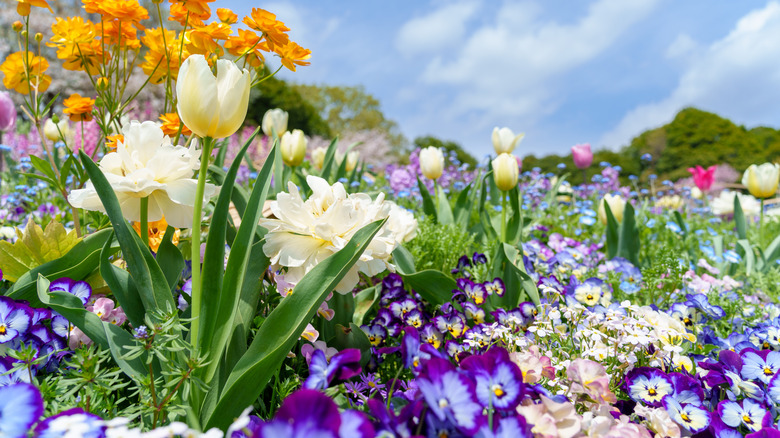When Is The Best Month To Plant Perennials? The Answer Is Surprisingly Simple
When it comes to gardening, knowing the best month to plant perennials can be difficult. You might assume that spring is the best time, since it coincides with warmer weather and longer days, but there's another season that has better advantages. Planting during fall means that your plants get cooler air temperatures to reduce stress, while the soil still holds summer's warmth to encourage strong root development. By focusing energy underground instead of on top growth, perennials can establish a firm foundation before winter sets in. That's why October is considered the ideal month for planting many perennials.
Planting perennials in the fall should be part of your ultimate fall to-do list for the garden of your dreams. There are plenty of perennials to choose from, and knowing when and how to plant fall bulbs for spring blooms can improve your garden. The cooler days of October make working outdoors more comfortable, and rainfall helps keep new plants watered without as much effort. Compared with spring planting, you'll often find perennials need less care to get established because the season naturally works in their favor.
You'll see the payoff for your work in the spring. Instead of struggling to take root as the weather warms, perennials planted in October wake up already settled in their new home. That means stronger growth, earlier blooms, and more reliable performance in the seasons ahead. Of course, October isn't perfect for every situation — extreme climates and specific plant needs may call for a different approach.
Why October is the best month to plant perennials
October gives perennials the best balance between soil and air temperatures. Soil retains heat from the summer months, which encourages strong root growth, while the cooling air reduces heat stress that can damage new transplants. This timing allows plants to direct their energy underground, building sturdy root systems before winter dormancy. Fewer weed and pest issues also make fall planting a good option. By the time spring arrives, those perennials are already established, ready to produce fuller foliage and longer-lasting blooms.
Another advantage of October planting is moisture. Many regions receive more consistent rainfall in the autumn, which means gardeners can rely less on supplemental watering while reducing competition and the risk of transplant shock. Compared to spring, when plants are dividing their resources between top growth and roots, fall planting gives perennials a head start for the following growing season.
However, be aware that the best time to plant perennials can shift depending on the climate. In colder northern zones, late September may be safer to ensure roots establish before the ground freezes. Some perennials need to be planted at specific times – for example, timing is crucial for garden mums to bloom all autumn long. But in warmer southern areas, planting can extend well into November. While October is certainly the simplest and most reliable choice for perennials, spring planting still works; your plants will just require a bit more care to ensure they grow well.

